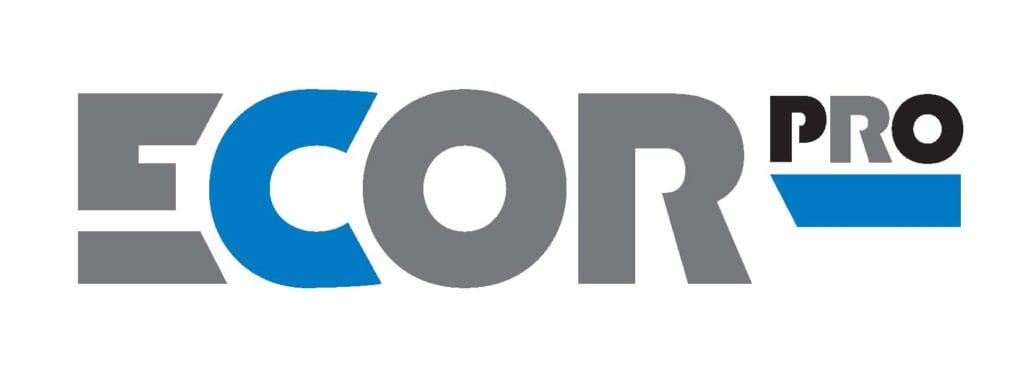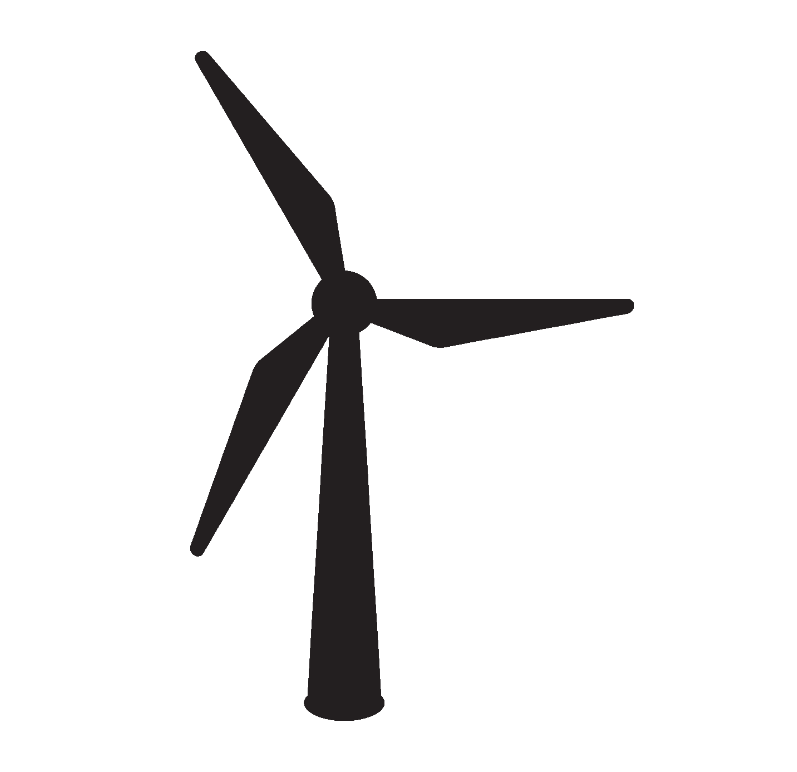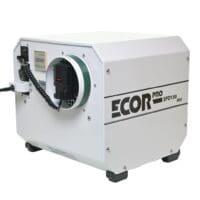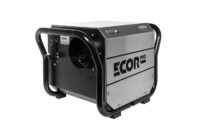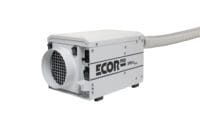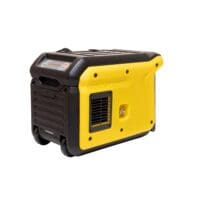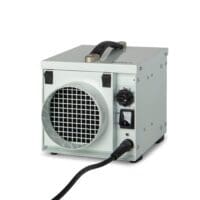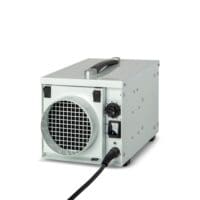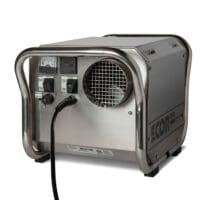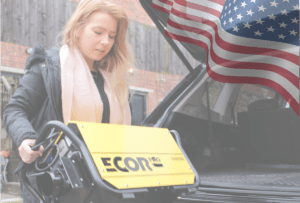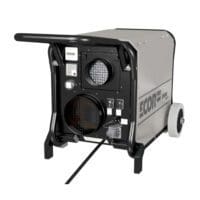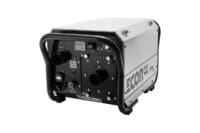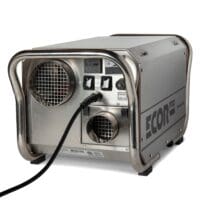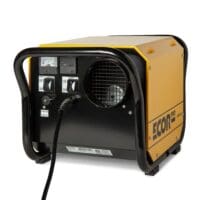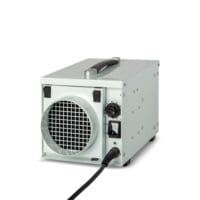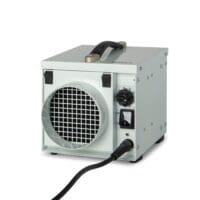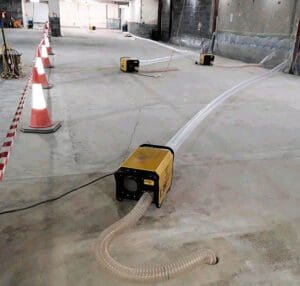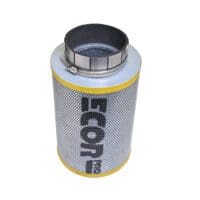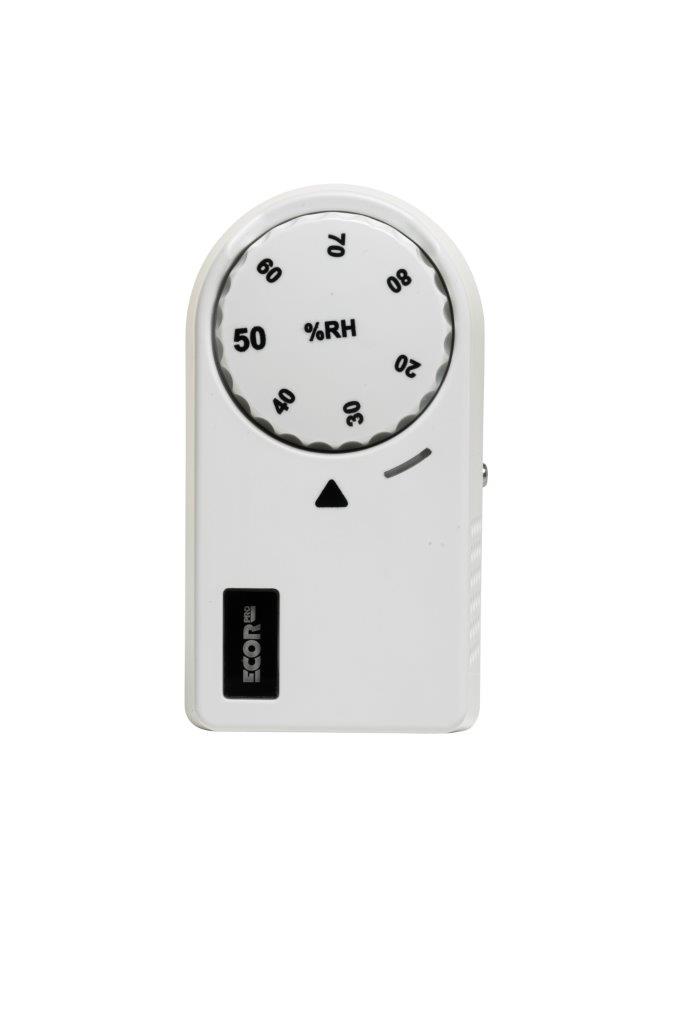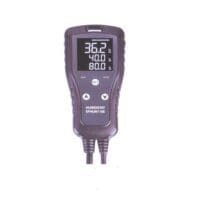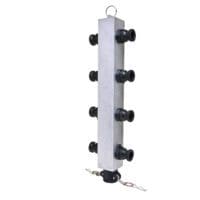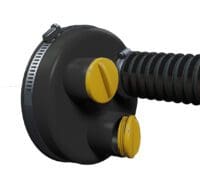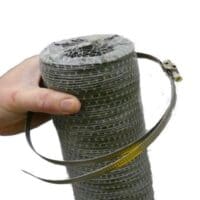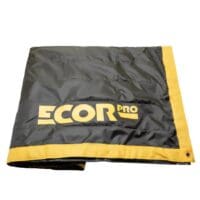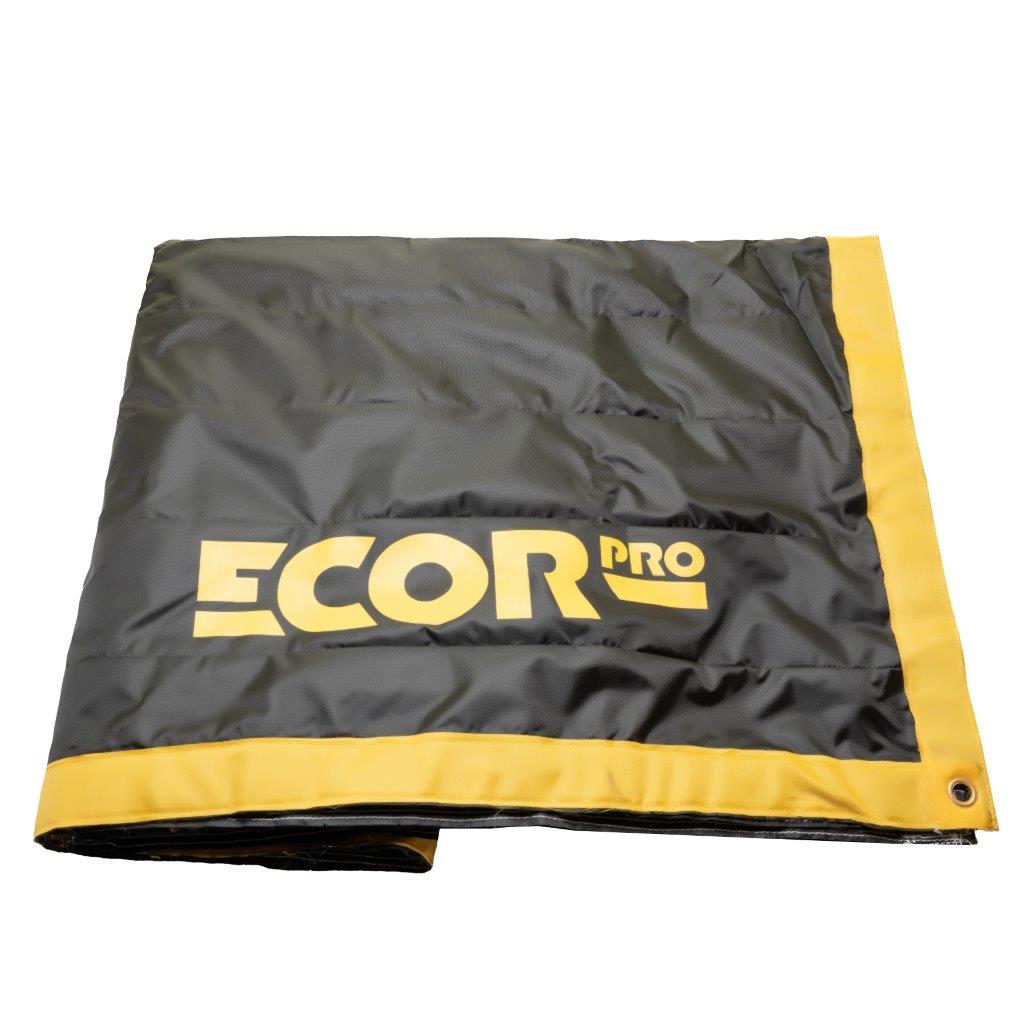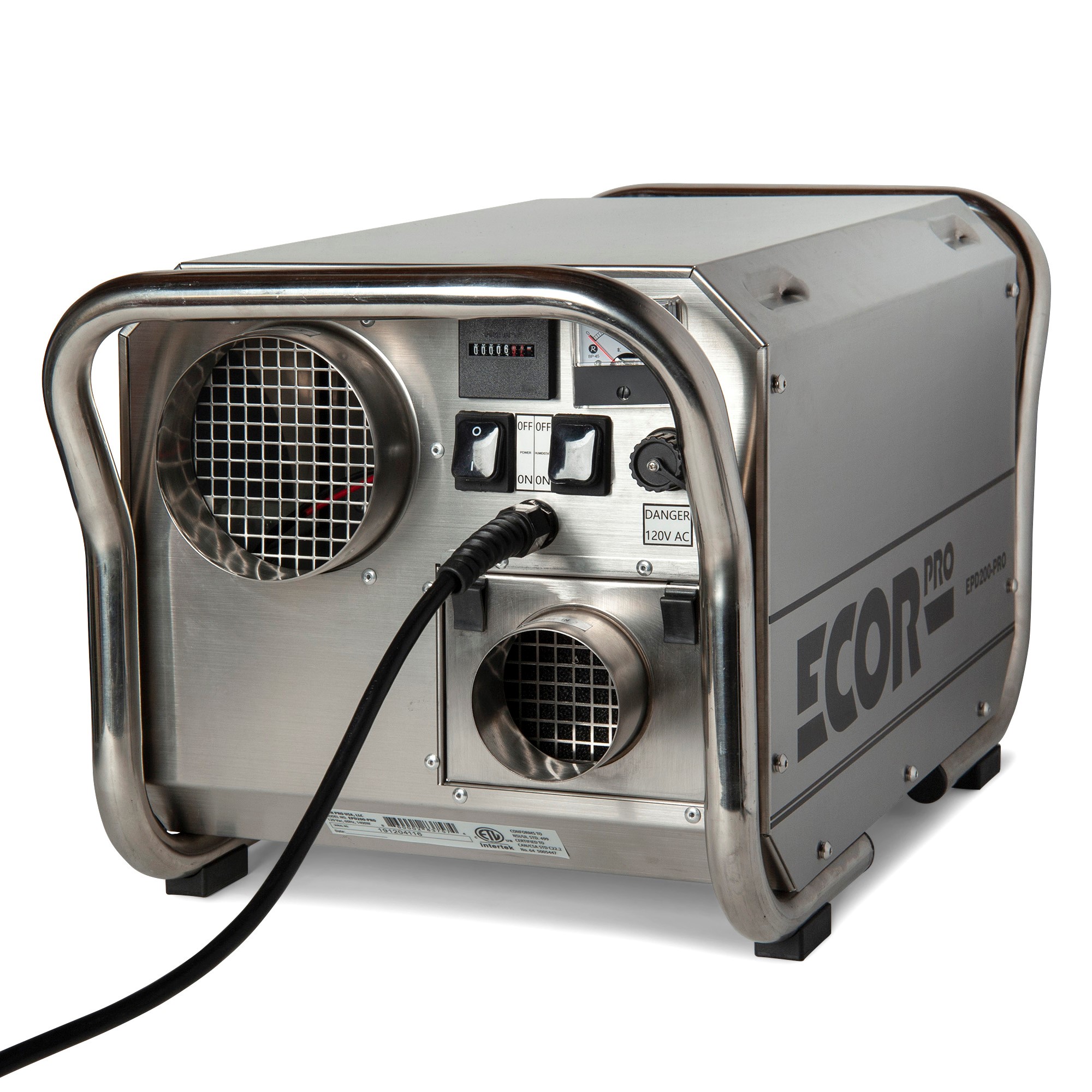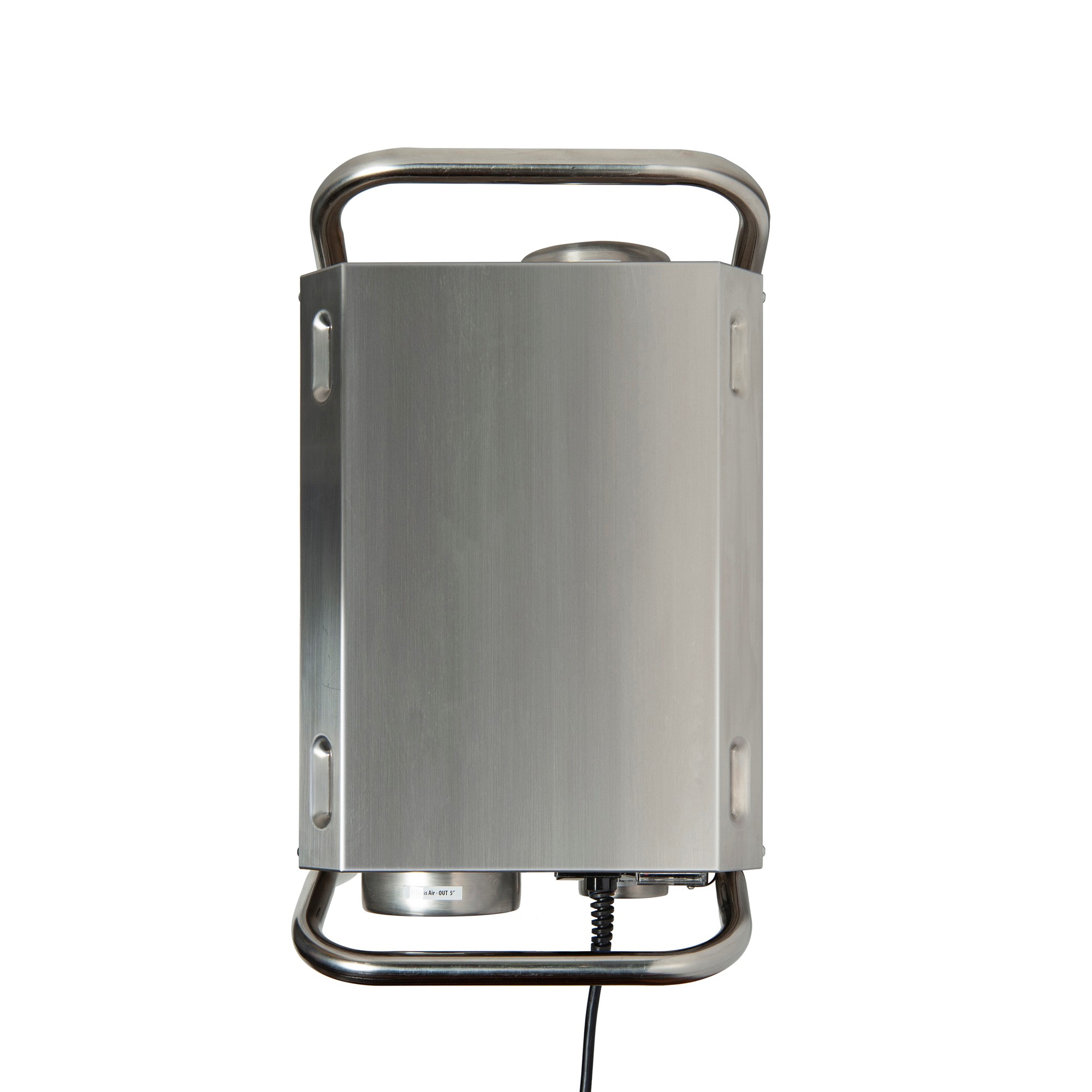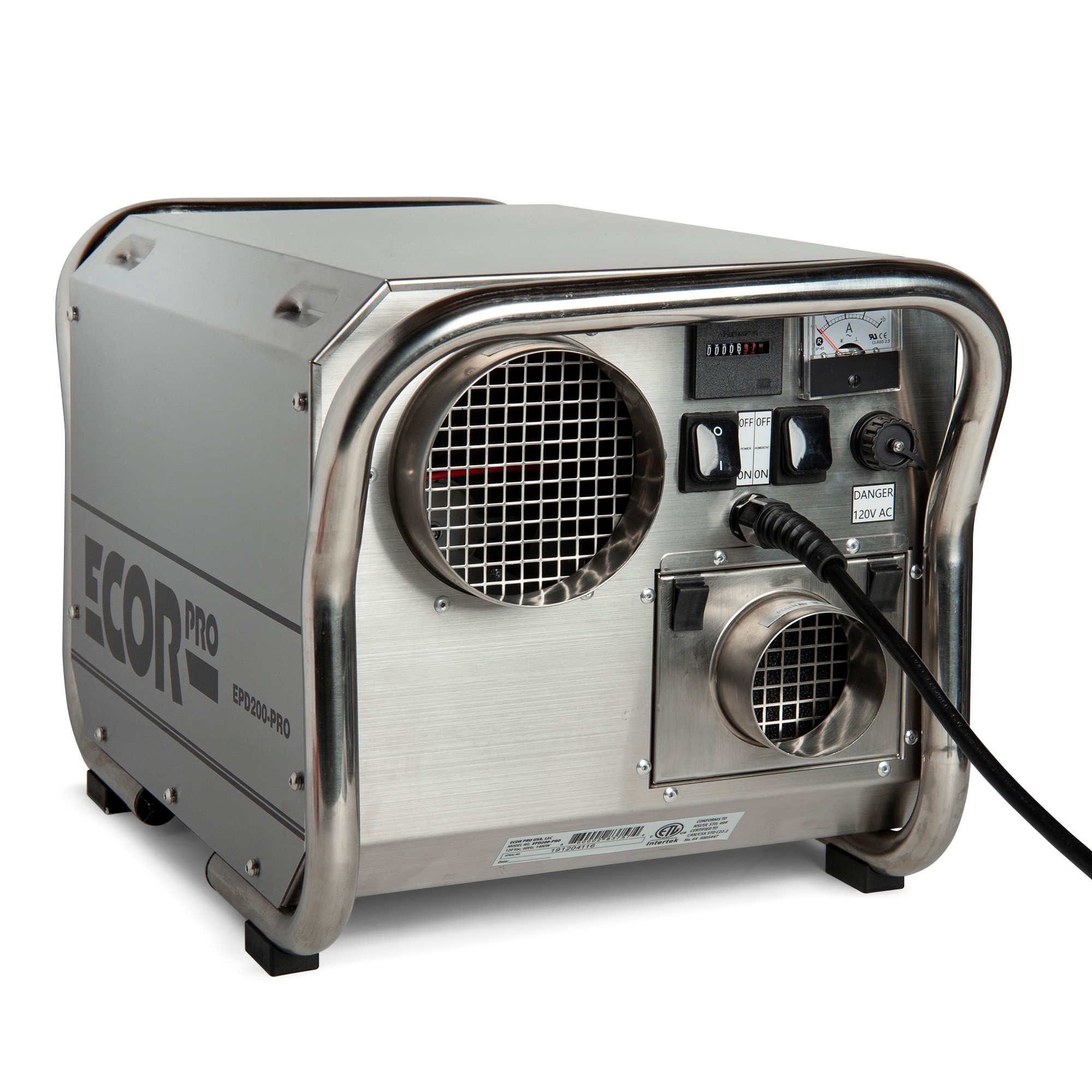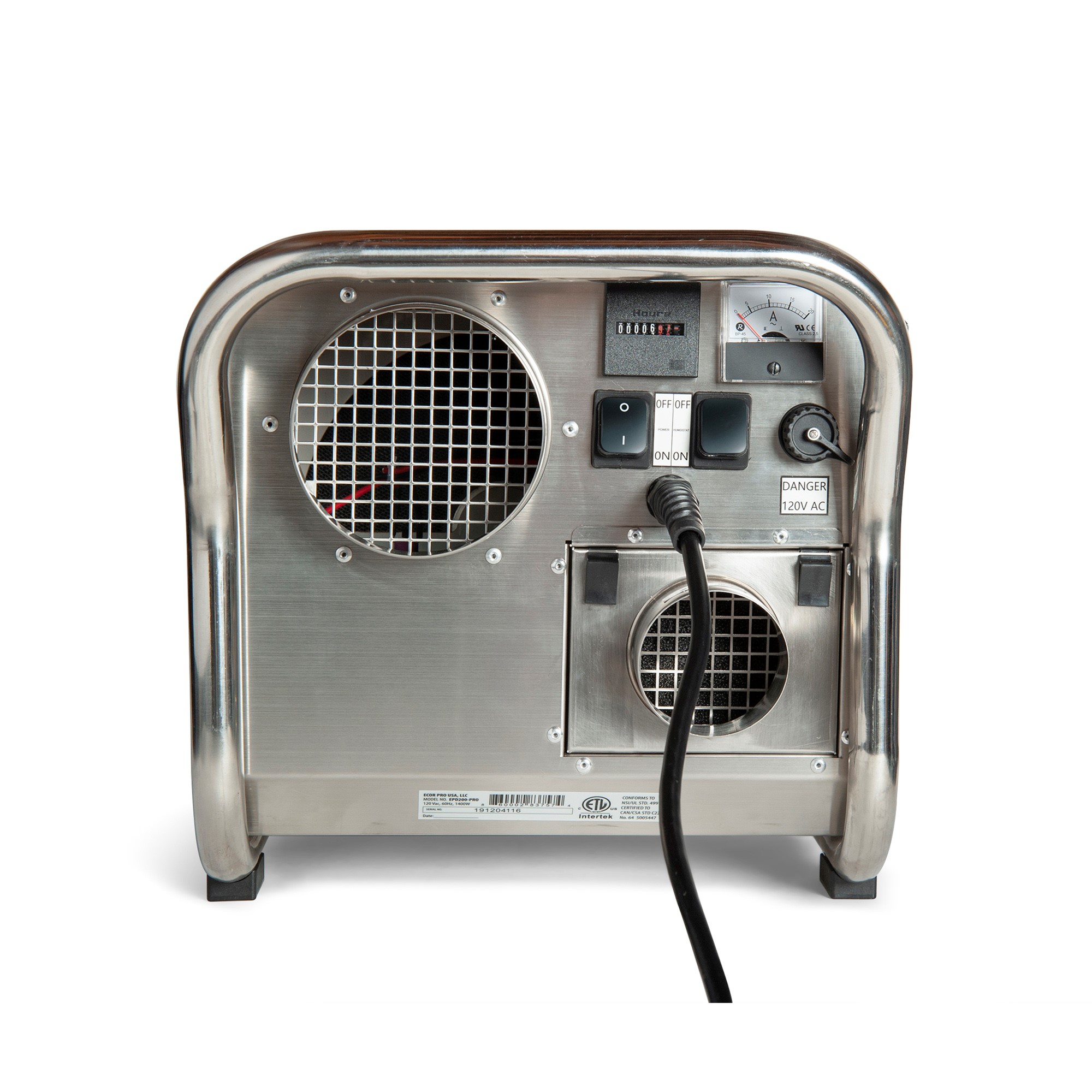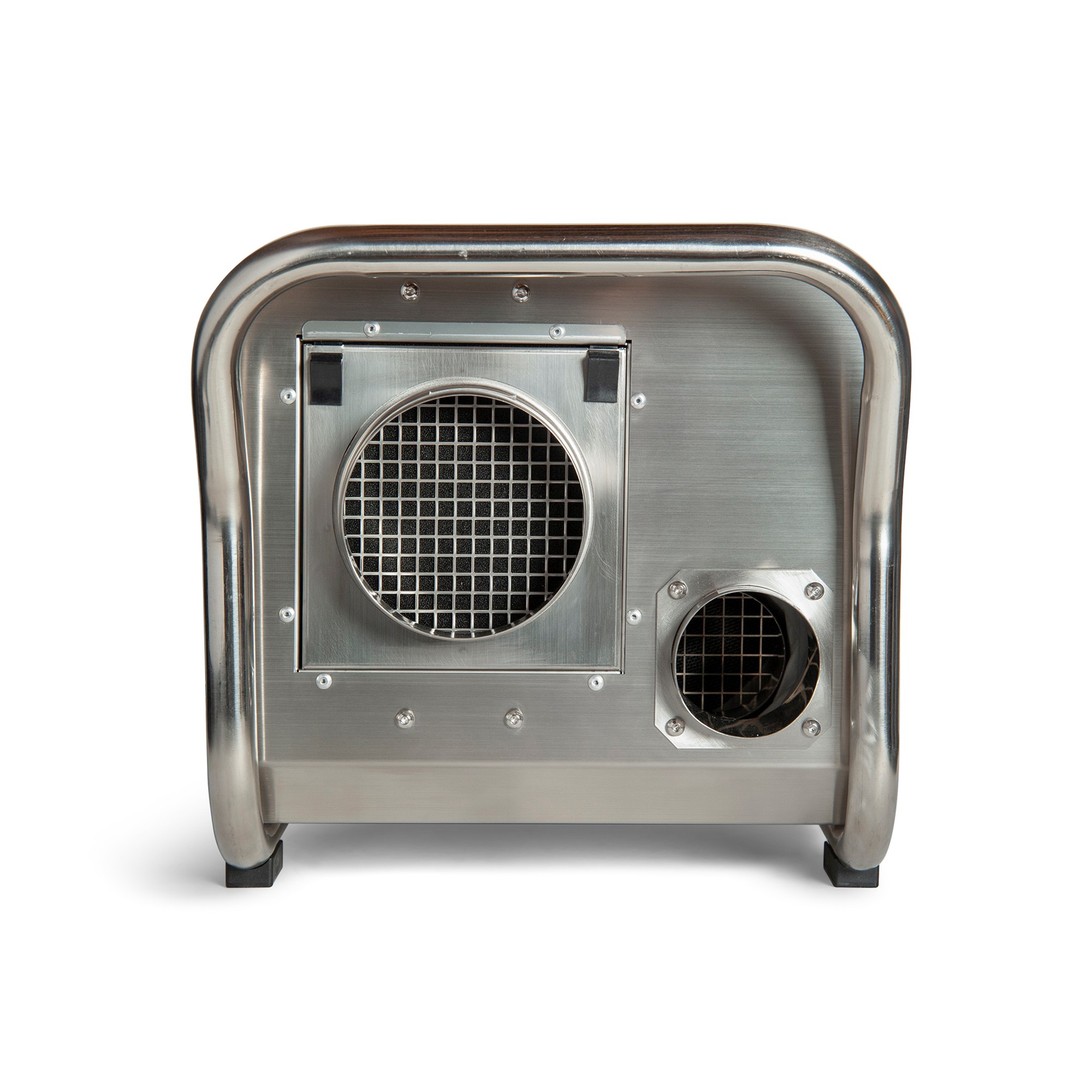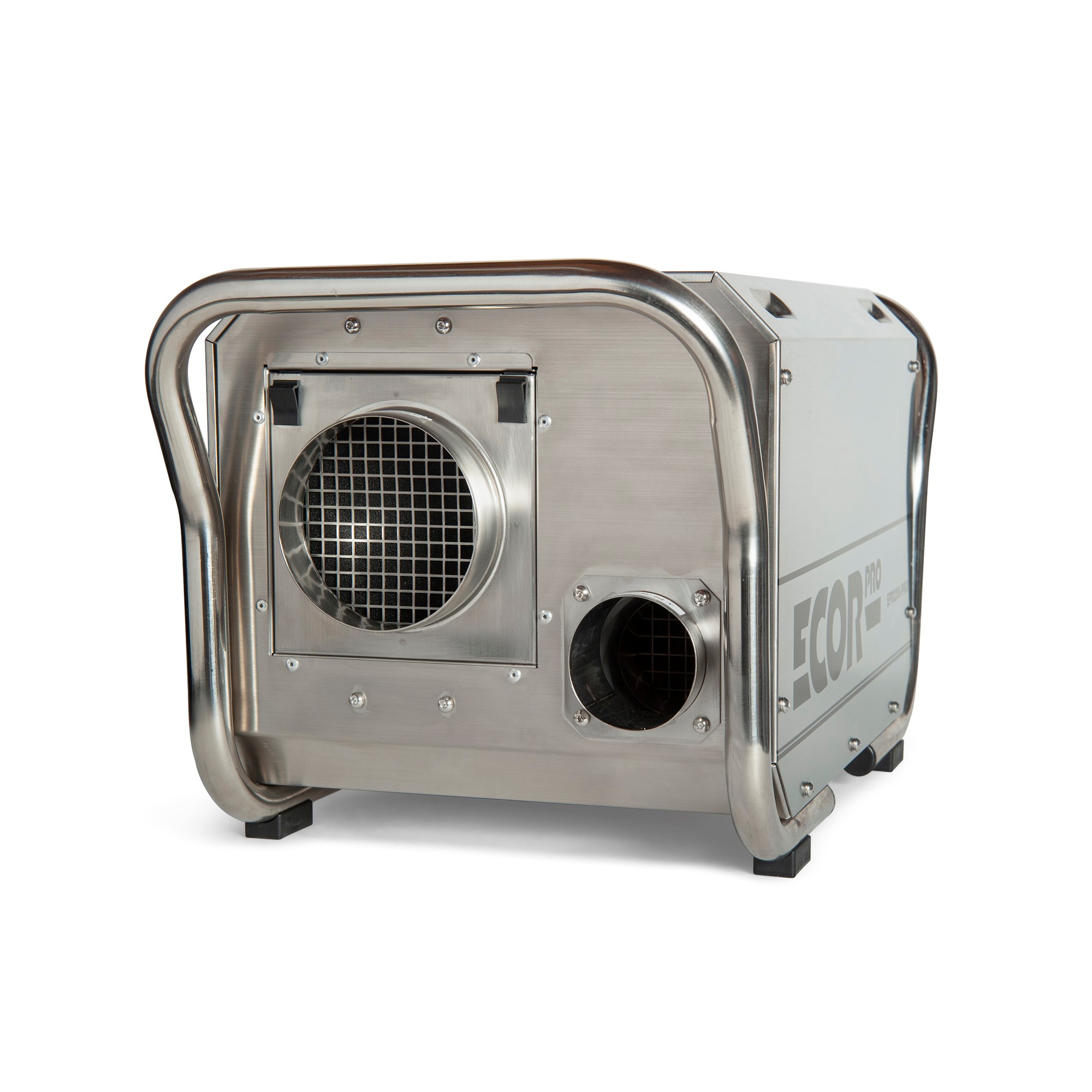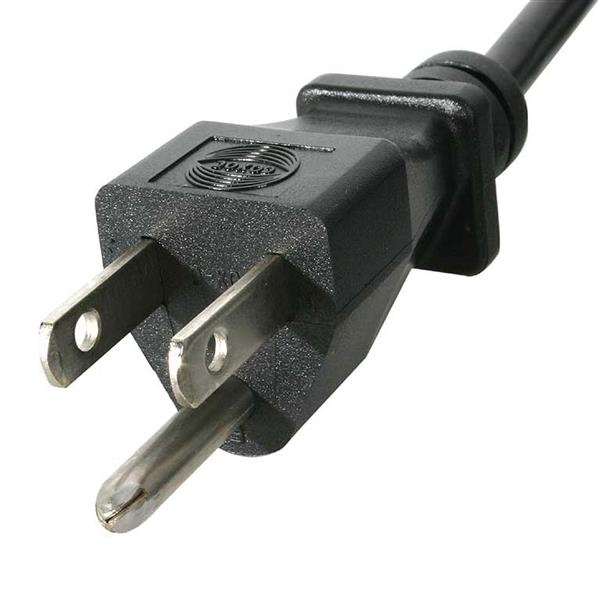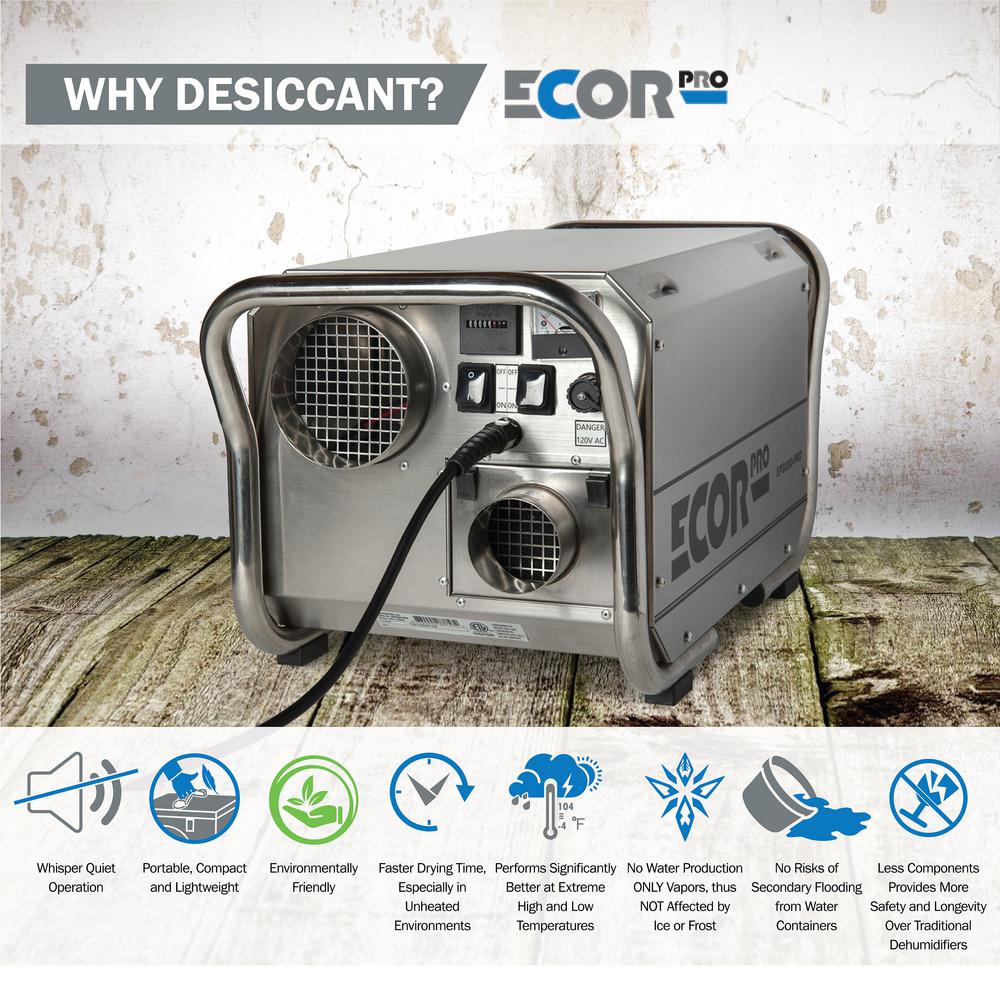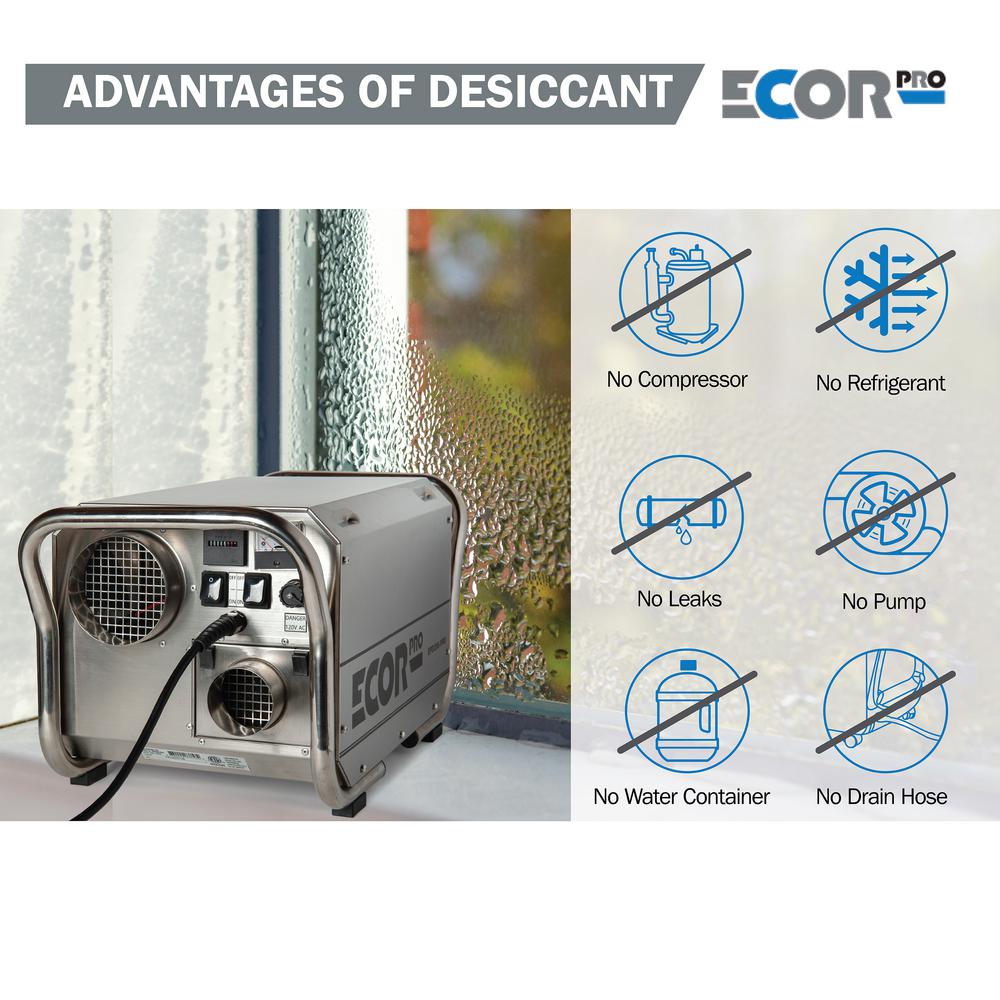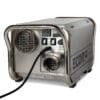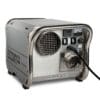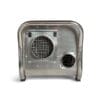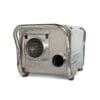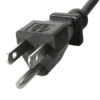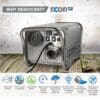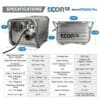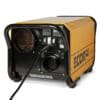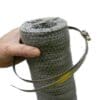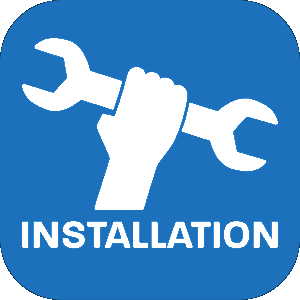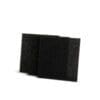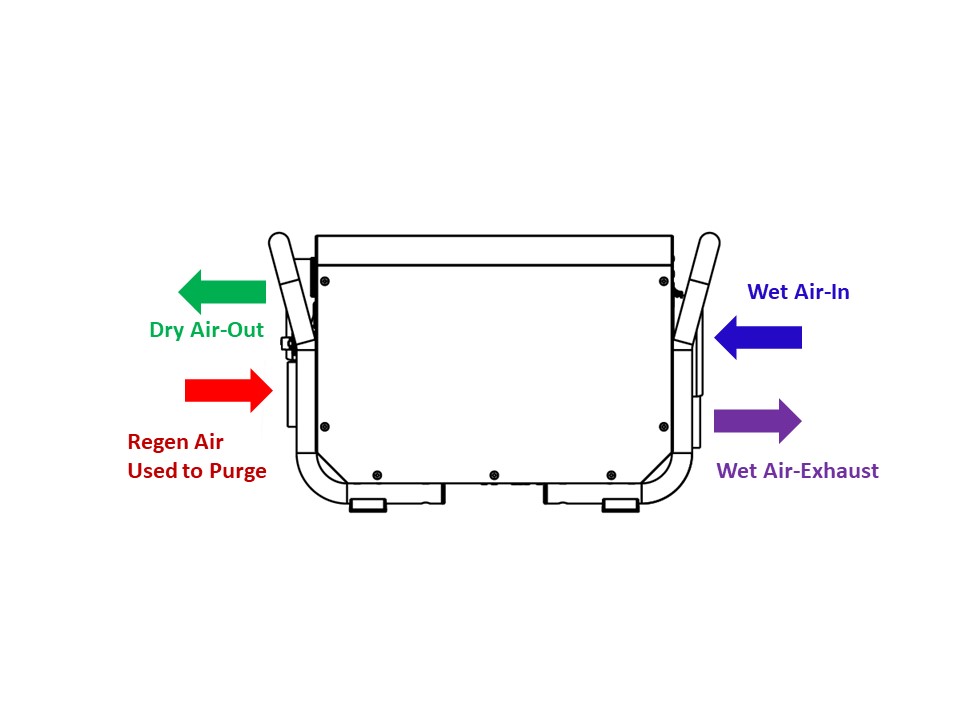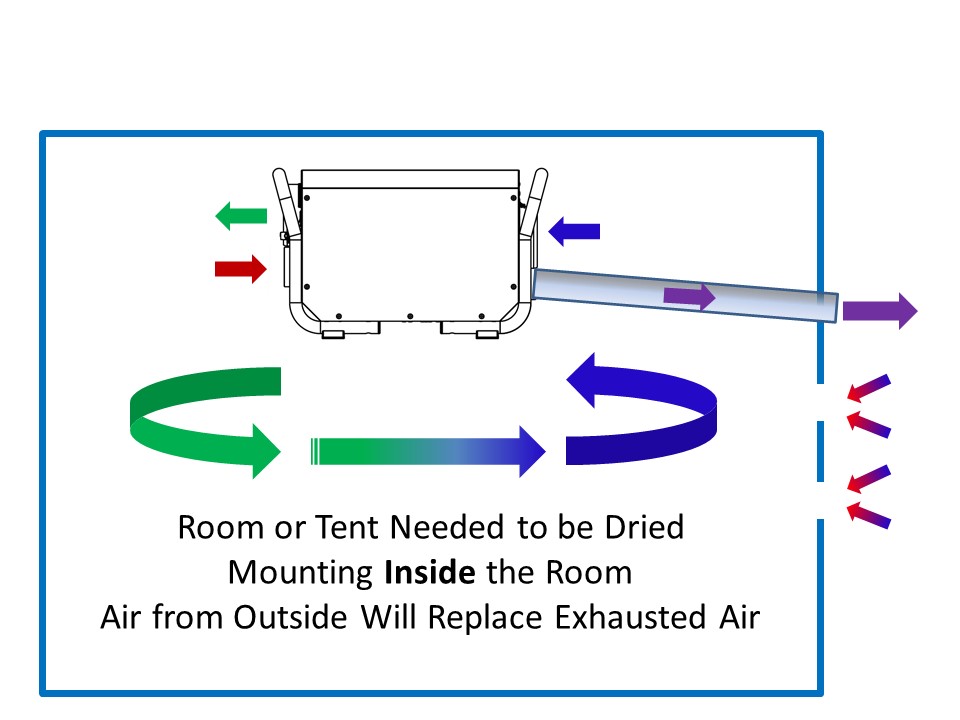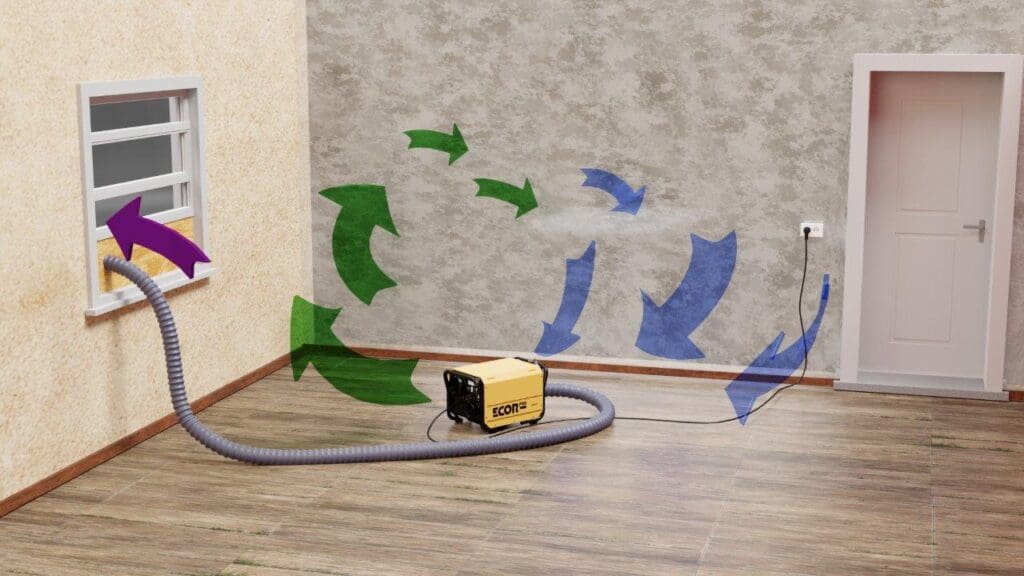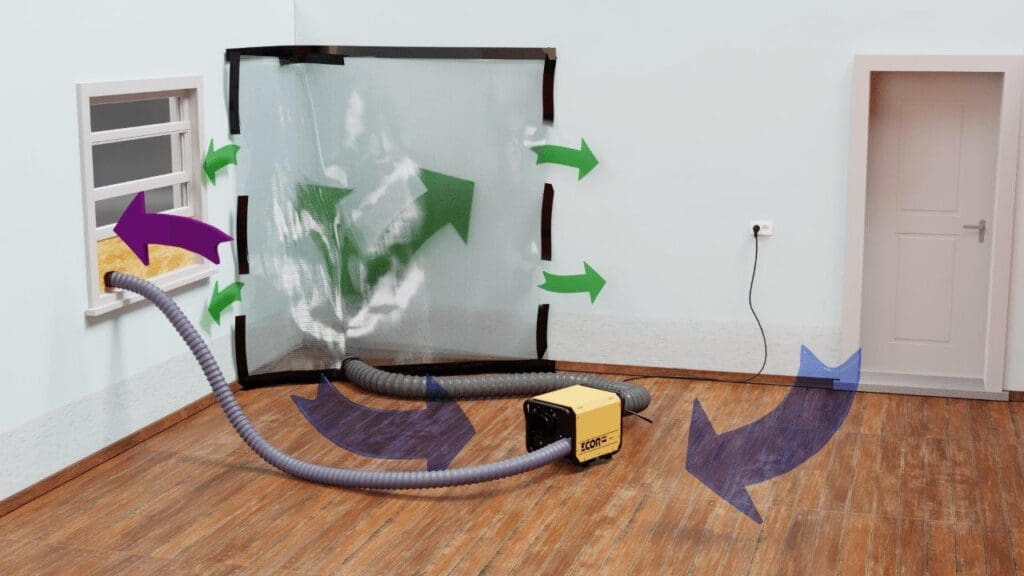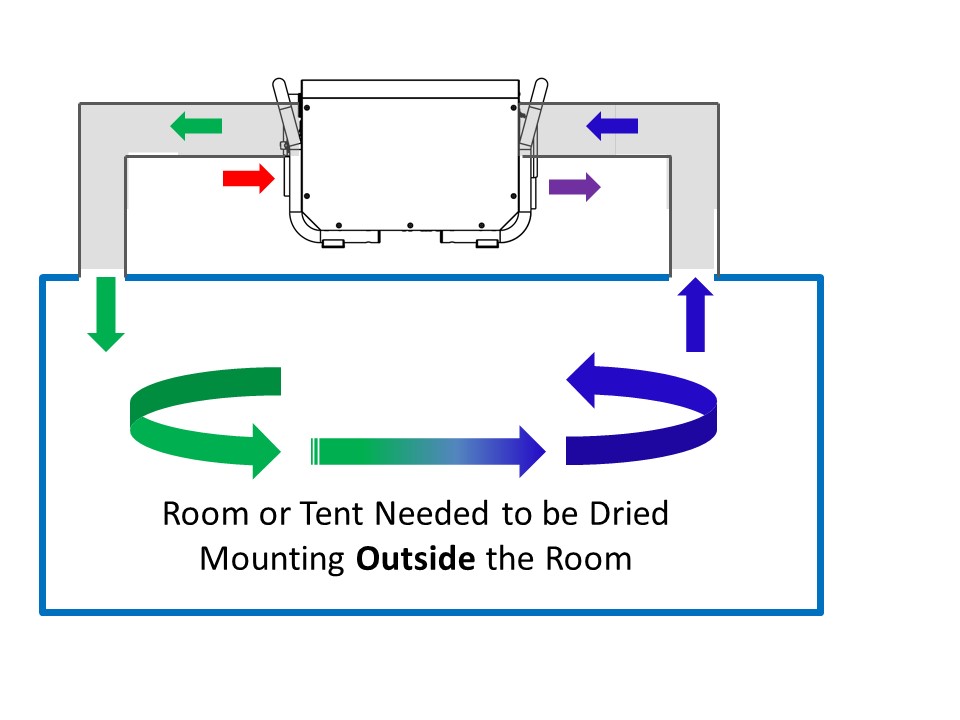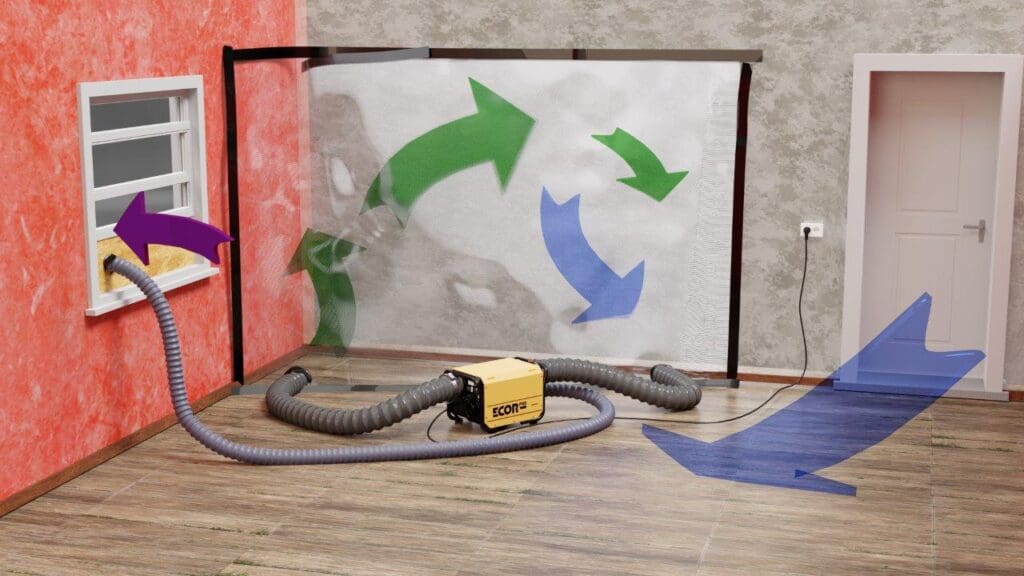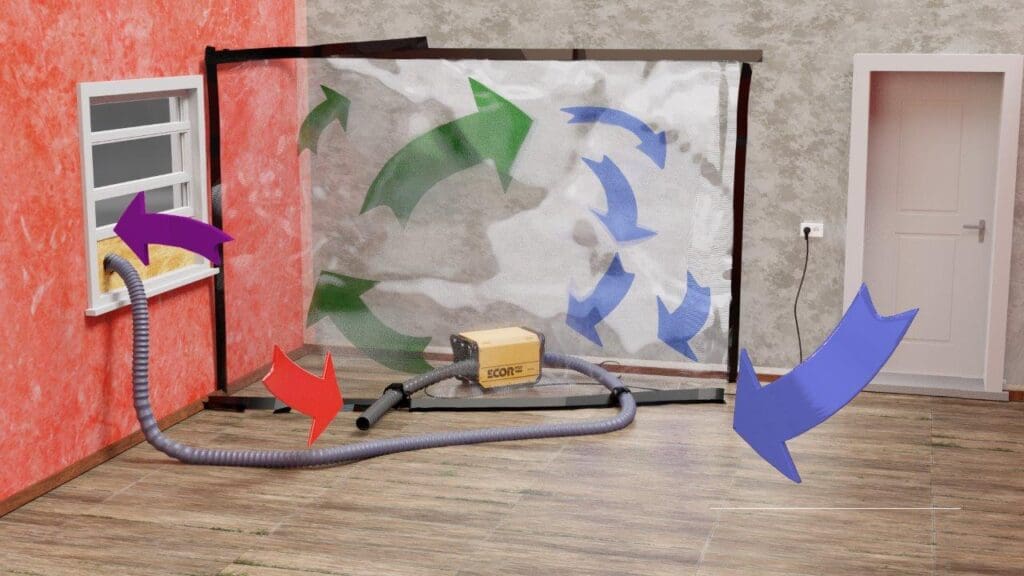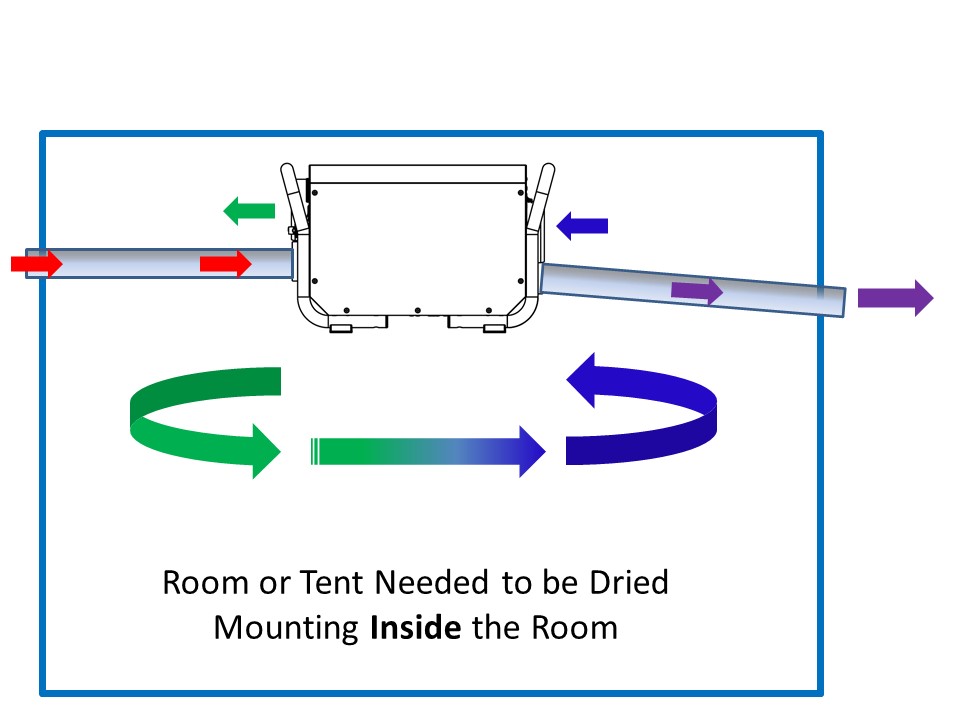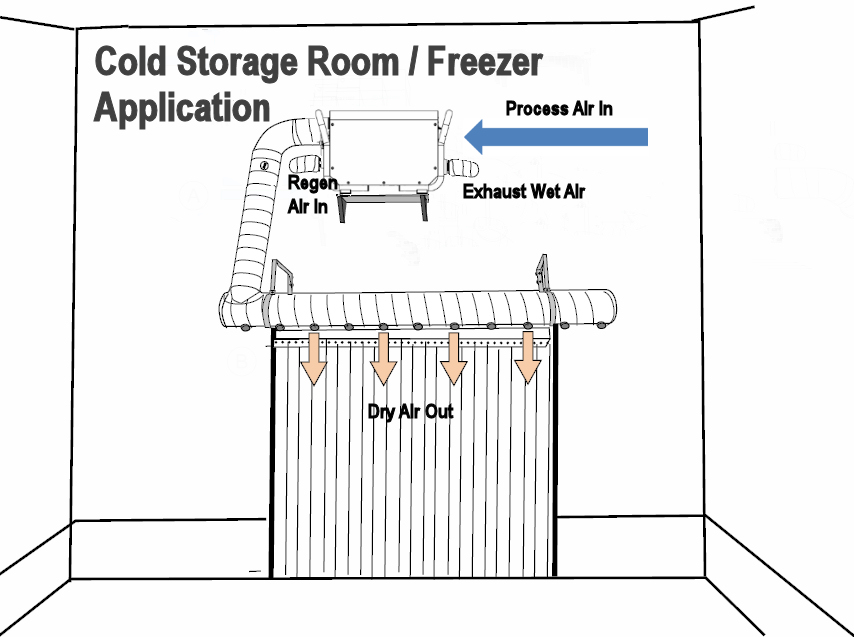Neutraldruck-Fokustrocknung - FLOOD DRYING
Installation von Luftentfeuchtern
Dies ist ein 4-Loch-Luftentfeuchter, d.h. es gibt 2 separate Ventilatoren im Inneren. Einer für die Prozessluft (Luft, die getrocknet werden muss) und die Regenerationsluft, die verwendet wird, um das Rad von Feuchtigkeit zu befreien, und die dann abgeführt wird
Das Trocknen eines durch Wasser beschädigten Raums hat sich von der Zeit, in der man ein Feuer anzündete und die Türen und Fenster öffnete, weiterentwickelt. Die Branche lässt nicht länger einen Luftentfeuchter in der Mitte des überschwemmten Raums stehen und hofft auf das Beste, nicht zuletzt, weil dadurch teure Energie verschwendet wird und weil die Auftragnehmer sich zunehmend der Notwendigkeit bewusst sind, sowohl ihren ökologischen Fußabdruck als auch die für die Arbeit benötigte Zeit zu reduzieren.
Die Verfügbarkeit von Strom bedeutet auch, dass effizientere Produkte für die Stromversorgung verwendet werden können als Geräte mit höherem Stromverbrauch.
Da die Einsparung von Arbeitskräften und die effektive Nutzung teurer Anlagen in einem wettbewerbsorientierten Markt immer wichtiger werden, ist die gezielte Trocknung ein guter Anfang, aber auf dem Weg zu einer nachhaltigeren, kostenorientierten Industrie reicht sie nicht aus.
Durch die gezielte Trocknung mit Zelten wird sichergestellt, dass der Luftentfeuchter nur die nassen Teile des Raums trocknet und nicht die nicht betroffenen Bereiche, was zu Sekundärschäden führen kann, da einigen Materialien im restlichen Raum zu viel Feuchtigkeit entzogen wird. Kurzum, einen ganzen Raum zu trocknen, um eine Überschwemmung in einem Teil des Raumes zu beheben, ist bemerkenswert ineffizient.
Bei der gezielten Trocknung wird eine Plastikfolie verwendet, um eine abgedichtete Kammer oder ein "Zelt" um den nassen Bereich des Raums herum zu schaffen. Dadurch werden erhebliche Mengen an Energie eingespart, da die 90 % des Raums, die nicht nass waren, nicht getrocknet werden - aber selbst dieser Ansatz ist ineffizient.
Die Ineffizienz entsteht, wenn das Zelt von außen mit der trockenen Luft aus einem Trockenmittelentfeuchter (Absorptionsentfeuchter) gespeist wird, der die beste Wahl für die Trocknung von dichten Materialien wie Ziegel- oder Blockwänden ist.
Wenn Luft in das Zelt eingeblasen wird, muss die gleiche Menge an Luft wieder entweichen. Dieses Überdrucksystem bedeutet, dass die Trocknungsluft aus dem gesamten Raum entnommen wird - und auch von außen, wenn die Fenster geöffnet sind. Dadurch wird der gesamte Raum in das Trocknungssystem einbezogen, wobei der Entfeuchter gezwungen ist, die möglicherweise feuchte Luft zu trocknen, bevor sie in das Zelt geleitet wird. Wenn die zugeführte Luft nicht kontrolliert werden kann, kann auch die Trocknung nicht kontrolliert werden.
Die Lösung besteht darin, ein Unterdrucksystem zu schaffen, indem man den Luftentfeuchter in das Innere des Zelts verlegt und so eine kontrollierte Umgebung schafft.
Lassen Sie uns über Mathematik reden. In unserem positiven System erzeugt ein normaler Trockenmittelentfeuchter mit drei Anschlüssen, der 150 Kubikmeter pro Stunde bewegt, wahrscheinlich 4200 Kubikmeter trockene Luft zum Trocknen und verbraucht 30 Kubikmeter zum Trocknen seines Rades. In einem typischen 1-Kubikmeter-Zelt (35 cft) wird die Luft 120 Mal pro Stunde ausgetauscht, aber wenn sich das Zelt in einem Raum mit einem Gesamtvolumen von 60 Kubikmetern (2100 cft) befindet, wird auch die Luft im Raum außerhalb des Zelts zweimal umgewälzt - ohne jeden Nutzen.
Bei einem Negativsystem wird die Luft im Zelt nur 30-mal ausgetauscht, aber 120-mal pro Stunde umgewälzt, wobei sie jedes Mal trockener wird, was die Effizienz des Trocknungsvorgangs deutlich erhöht und den Energieverbrauch senkt.
Der DH3500/EPD200 mit vier Anschlüssen und der EPD300 von Ecor Pro gehen noch einen Schritt weiter und verwenden einen separaten Luftstrom, um das Rad zu trocknen, so dass es bei gleichem Druck arbeitet und die Luft im Zelt nicht mit der Raumluft ausgetauscht wird. Der Entfeuchter kann im Zelt platziert werden, und die Regenerationsluft zum Trocknen des Rades wird in das Zelt hinein- und wieder herausgepumpt. Alternativ kann der Entfeuchter außerhalb des Zelts aufgestellt werden und die Luft vom Zelt zum Entfeuchter und zurück geleitet werden.
Luftumwälzung 100%, Luftaustausch 0%. Das ist effizient.
Die Bündelung der Trockenluft führt zu schnelleren Trocknungszeiten. Beispiel für "Überdruck" oder das Erzwingen der trockenen Luft in den Bereichen, in denen sie benötigt wird
Die Umwälzung der zu trocknenden Luft hat eine kombinierte Wirkung und führt zu einer schnelleren Trocknung. Dieses System ist "Neutral Pressure" und befindet sich außerhalb des zu trocknenden Raums.
Die effizienteste Art der Trocknung ist es, das Gerät in dem zu trocknenden Bereich aufzustellen und die Luft umzuwälzen. Dieses System arbeitet mit "neutralem Druck" und befindet sich innerhalb des zu trocknenden Raums.
Durch den Betrieb bei Minusgraden und in geschlossenen Räumen ermöglicht 4-Hole auch in Kühl- und Gefrierräumen die Reduzierung von Feuchtigkeitsproblemen.
